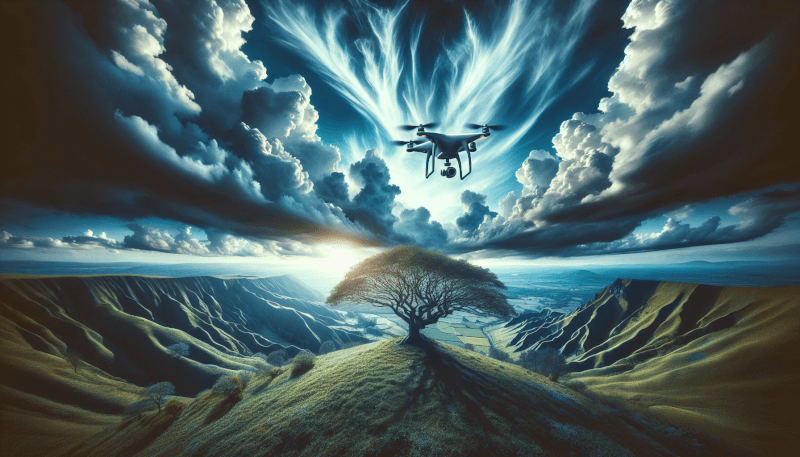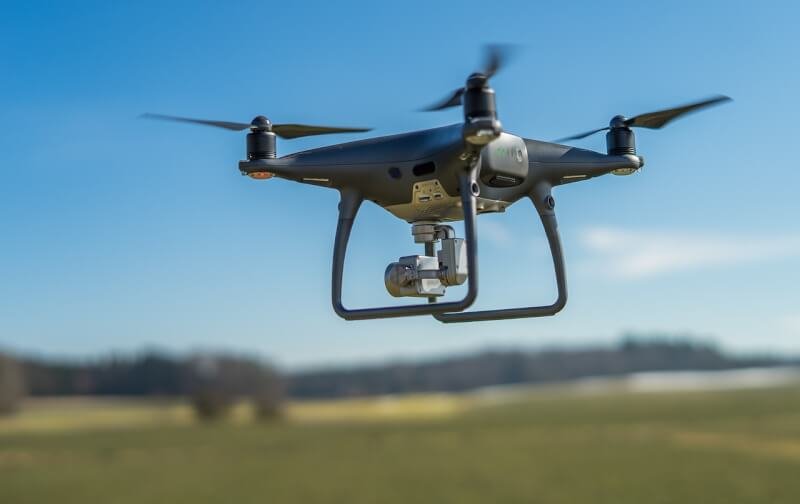Are you ready to take your aerial photography and videography skills to new heights? Choosing the right drone camera is essential to capturing those breathtaking aerial shots that you’ve always dreamt of. With so many options available in the market, it can be overwhelming to find the perfect one for your specific needs. Whether you’re a professional photographer or simply a hobbyist, this article will guide you through the process of selecting the right drone camera that will meet all your requirements. From image quality and stability to flight time and control features, we’ve got you covered. So buckle up and get ready to soar through the sky with the perfect drone camera.
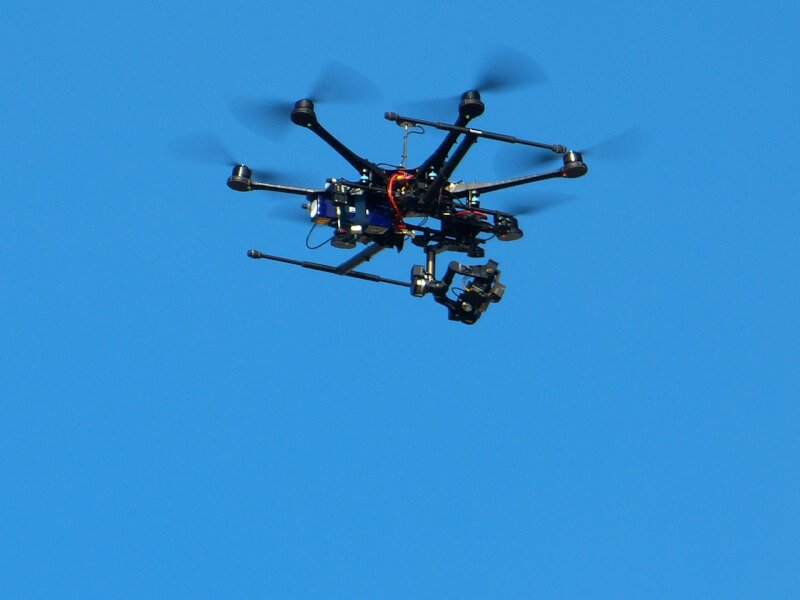
Factors to consider when choosing a drone camera
Camera quality
One of the most important factors to consider when choosing a drone camera is the camera quality. This refers to the overall performance and image output of the camera. Look for cameras that are known for their high-quality images and videos, as this will greatly impact the final results of your aerial photography or videography.
Resolution
Resolution refers to the number of pixels in an image or video, and it plays a crucial role in determining the level of detail and clarity in your photos and videos. Higher resolution cameras will produce sharper and more detailed images, so consider opting for a camera with a higher resolution if you want to capture professional-quality footage.
Sensor size
The sensor size of a drone camera determines how much light it can capture. Larger sensors tend to perform better in low-light conditions and offer improved dynamic range. If you plan on shooting in challenging lighting situations, such as at dusk or dawn, or indoors, it is recommended to choose a drone camera with a larger sensor size.
Image stabilization
Image stabilization is an essential feature in a drone camera as it helps reduce the effects of camera shake or vibrations caused by the drone’s movements during flight. This feature ensures smoother and more stable footage, allowing you to capture steady and professional-looking shots. Look for camera models with built-in mechanical or electronic stabilization systems for optimal results.
Lens options
Having a range of lens options is essential for drone cameras as it allows you to capture different perspectives and achieve various visual effects. Some cameras offer interchangeable lenses, giving you the flexibility to choose the most suitable lens for your specific needs. Consider the lens options available for the camera you are considering and ensure they align with the type of photography or videography you plan on doing.
Field of view
The field of view (FOV) refers to the extent of the scene that the camera can capture. It is typically measured in degrees, and a wider FOV allows you to capture more of the surrounding area in a single shot. Consider the FOV of the drone camera you are interested in, especially if you want to capture expansive landscapes or large group shots.
Low-light capabilities
The ability of a drone camera to perform well in low-light conditions is crucial for capturing high-quality footage during sunset, sunrise, or in dimly lit environments. Look for cameras with a high ISO range and larger aperture, as these features allow more light to enter the camera sensor, resulting in better low-light performance.
Frame rate
The frame rate refers to the number of frames a camera can capture per second, and it determines the smoothness and fluidity of your videos. Higher frame rates are ideal for capturing fast-paced action or creating slow-motion effects while maintaining clarity. Consider the frame rate options available in the camera you are considering, depending on your intended use and the type of footage you plan on shooting.
Bitrate
Bitrate is an important factor to consider if you want to capture high-quality and detailed videos. It refers to the amount of data processed per second and affects the level of detail and overall image quality. A higher bitrate provides better image quality but also requires more storage space. Consider your storage capabilities and the level of detail you require when choosing a drone camera.
Dynamic range
Dynamic range refers to the ability of a camera to capture a wide range of tones, from the darkest to the brightest areas of a scene. Cameras with a higher dynamic range can preserve more details in shadows and highlights, resulting in more balanced and visually appealing images. This is particularly important in situations with high contrast, such as landscapes with bright skies and dark shadows. Look for a drone camera with a good dynamic range to ensure your footage is well-exposed and visually striking.
Types of drone cameras
Integrated cameras
Integrated cameras are built-in cameras that come with drones and cannot be removed or replaced. These cameras are specifically designed for the drone model and offer a convenient and straightforward option for drone photography and videography. Integrated cameras are usually more compact and lightweight, making them a suitable choice for beginners or casual drone users.
Interchangeable lenses
Some drone cameras offer the ability to switch out lenses, similar to traditional DSLR or mirrorless cameras. This allows you to customize the lens according to your specific needs, whether it’s capturing wide-angle shots or zooming in for telephoto shots. Interchangeable lenses offer professionals and advanced users more flexibility and creative control over their aerial imaging.
GoPro cameras
GoPro cameras have gained popularity in the drone industry for their compact size, durability, and high-quality video capabilities. These cameras can be mounted onto compatible drones, providing excellent image stabilization and advanced features such as slow-motion and time-lapse modes. GoPro cameras are especially favored by sports enthusiasts and action filmmakers due to their ability to withstand extreme conditions and capture immersive footage.
Smartphone cameras
Some drones are designed to accommodate smartphones as the primary camera. This allows you to use your smartphone’s camera and take advantage of its advanced features and photo/video capabilities. Using a smartphone as your drone camera offers convenience and flexibility, as it eliminates the need for an additional camera and allows you to utilize the full range of photography apps and editing tools available on your phone.
Camera specifications to look for
Megapixels
Megapixels determine the resolution and level of detail in an image. Higher megapixel counts result in larger image sizes and greater detail. However, it is important to note that megapixels alone do not guarantee better image quality, as factors like sensor size and image processing also play crucial roles. Consider the megapixel count of a drone camera, but also keep in mind the other specifications that contribute to overall image quality.
Sensor type
The type of sensor in a drone camera greatly affects its performance in terms of image quality, low-light capabilities, and dynamic range. There are two main types of sensors: CMOS and CCD. CMOS sensors are more commonly used in drone cameras and offer better low-light performance and faster readout speeds. CCD sensors, on the other hand, provide slightly better image quality and color accuracy but are less common in drone cameras. Consider the sensor type and its impact on image quality when choosing a drone camera.
Lens focal length
Lens focal length determines the field of view and zoom capabilities of a drone camera. Wider focal lengths, such as 24mm or 35mm, are ideal for capturing expansive landscapes or group shots, while longer focal lengths, such as 50mm or 85mm, allow for closer-up shots and more magnification. Consider the focal length that suits your intended use and the type of shots you want to capture with your drone camera.
Aperture
The aperture of a camera lens refers to the size of the lens opening and determines the amount of light that enters the camera sensor. A larger aperture (lower f-stop value) allows more light to enter, making it ideal for low-light conditions. Additionally, a wider aperture creates a shallow depth of field, resulting in a blurred background and a more cinematic look. Consider the aperture range of a drone camera, especially if you plan on shooting in low-light environments or want to achieve a specific aesthetic.
ISO range
ISO range refers to the sensitivity of the camera’s image sensor to light. A higher ISO allows for better performance in low-light conditions, but it also increases the amount of noise or grain in the image. Look for a drone camera with a wide ISO range to ensure optimal performance in various lighting situations.
Shutter speed
The shutter speed controls the duration of time that the camera’s image sensor is exposed to light. A faster shutter speed is ideal for capturing fast-moving objects or avoiding motion blur, while a slower shutter speed can be used creatively to capture light trails or create a sense of motion. Consider the shutter speed capabilities of a drone camera to ensure it aligns with your intended use and the type of shots you want to capture.
White balance
White balance refers to the adjustment of colors in an image to make them appear natural, regardless of the lighting conditions. Different lighting situations require different white balance settings to avoid color casts. Look for a drone camera with adjustable white balance settings or automatic white balance capabilities to ensure accurate and true-to-life colors in your photos and videos.
Color profiles
Some drone cameras offer different color profiles or picture styles that allow for additional color grading and post-processing options. These profiles, such as Standard, Vivid, or Log, impact the overall look and color reproduction of your footage. Consider the availability of color profiles in a drone camera if you plan on doing extensive post-processing or want to achieve a specific style or aesthetic in your work.
Anti-distortion technology
The propellers of a drone can cause distortions in the footage, especially in wide-angle shots. To combat this issue, some drone cameras feature anti-distortion technology that corrects the image and minimizes the fish-eye effect caused by the lens. Consider the presence of anti-distortion technology in a drone camera if you want to capture wide-angle shots without the undesirable distortions.
Compatibility with your drone
Drone brand compatibility
When choosing a drone camera, it is important to ensure compatibility with your specific drone model and brand. Not all drone cameras are universally compatible, so check the specifications and compatibility information provided by the manufacturer before making a purchase. Ensure that the camera you choose is specifically designed to fit and work seamlessly with your drone.
Mounting options and weight limitations
Consider the mounting options and weight limitations of your drone when choosing a camera. Some drones have specific mounting systems or require additional accessories to attach a camera. It is important to choose a camera that not only fits your drone but also meets the weight limitations set by the drone manufacturer. Exceeding the weight limitations can negatively impact the flight performance and stability of your drone.
Power requirements
Different drone cameras have different power requirements, and it is important to consider how these requirements align with your drone’s battery life and power supply. Ensure that the camera you choose can be powered by your drone’s battery or other power sources available for your specific drone model. It is also essential to consider the power consumption of the camera and its impact on the overall flight time and performance of your drone.
Gimbal compatibility
A gimbal is a stabilizing device that helps keep your camera steady during flight, allowing for smoother and more professional-looking footage. When choosing a drone camera, it is crucial to ensure compatibility with your drone’s gimbal system. Not all cameras are compatible with all gimbals, so check the specifications and manufacturer recommendations to ensure a proper fit.
Live video streaming
Live video streaming allows you to view the footage captured by the drone camera in real-time on a remote controller or mobile device. This feature is especially useful for framing your shots and ensuring you capture the desired footage. Consider whether live video streaming is a necessary feature for your drone camera, as not all models offer this capability. If live streaming is important to you, choose a camera that supports this feature and has a reliable connection with your remote controller or mobile device.
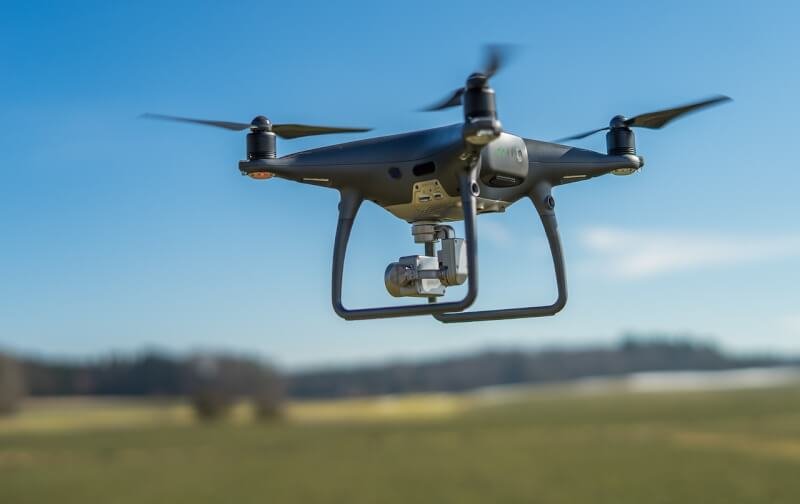
Budget considerations
Camera cost
The cost of a drone camera can vary significantly depending on the brand, features, and specifications. Consider your budget and prioritize the features that are most important to you when making a decision. While it is tempting to opt for the most expensive camera on the market, it is essential to consider your needs and intended use to avoid overspending on features you may not require.
Accessories and add-ons
In addition to the camera itself, there may be additional accessories or add-ons that you might need to purchase for optimal performance and functionality. These accessories can include extra batteries, memory cards, filters, lens adapters, or carrying cases. Factor in the cost of these accessories when budgeting for your drone camera, as they may be necessary for a seamless and enjoyable aerial photography or videography experience.
Repair and maintenance costs
Drones and cameras are delicate electronic devices that may require maintenance or repairs over time, especially if they are used frequently or in challenging environments. Consider the potential repair and maintenance costs associated with your chosen drone camera, such as spare parts, repairs, or professional maintenance services. It is important to have a budget set aside for any unforeseen expenses or requirements that may arise.
User experience and skill level
Ease of use
When choosing a drone camera, consider your skill level and experience with drone photography or videography. Some cameras offer user-friendly interfaces and intuitive controls, making them ideal for beginners or casual users. On the other hand, more advanced cameras may offer a wider range of manual controls and customization options, allowing experienced users to fine-tune their settings for optimal results. Choose a camera that aligns with your skill level and offers a user-friendly experience.
Auto modes and intelligent features
Many drone cameras come equipped with auto modes and intelligent features that make capturing great footage easier, even for those with limited experience. These features can include automated flight modes, subject tracking, or collision avoidance systems. Consider the presence of auto modes and intelligent features in a drone camera if you value ease of use and want to achieve professional-looking shots without extensive manual adjustments.
Manual controls and customization options
If you have experience with photography or videography and prefer more control over your shots, consider a drone camera that offers manual controls and customization options. These options allow advanced users to adjust settings such as aperture, shutter speed, ISO, and white balance for precise control over their footage. The availability of manual controls and customization options can greatly enhance your creative freedom and allow you to achieve your desired results.
Post-processing capabilities
Consider the post-processing capabilities of a drone camera, such as the ability to shoot in a raw format or apply specific color profiles and adjustments after the footage is captured. Some drone cameras offer more extensive post-processing capabilities than others, allowing for greater control and creative freedom during the editing process. If you plan on post-processing your footage extensively, choose a camera that offers the necessary features and flexibility for your editing workflow.
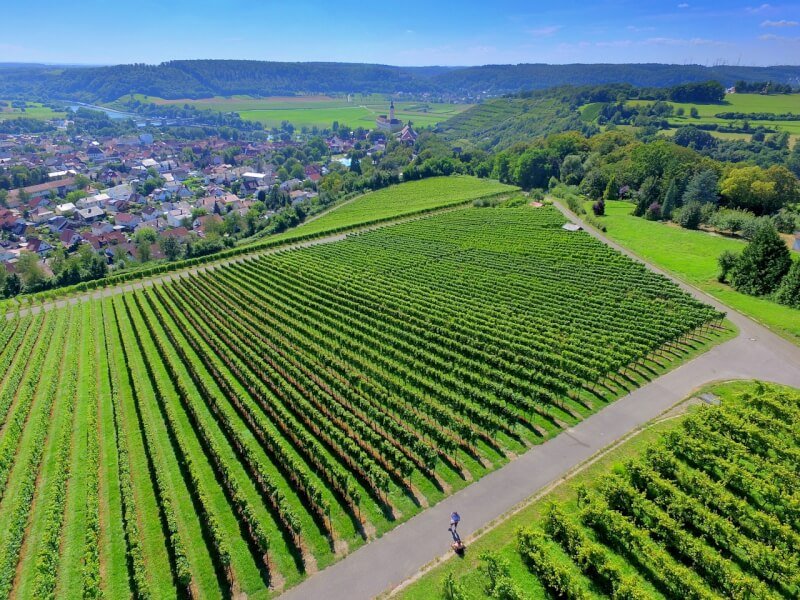
Intended use and photography/videography needs
Aerial photography/videography
If your primary goal is to capture stunning aerial photographs or videos, consider a drone camera that excels in image quality, resolution, and dynamic range. Look for a camera with a high megapixel count, a larger sensor size, and the ability to shoot in RAW format for maximum editing flexibility. Consider the camera’s low-light capabilities, as aerial photography often involves shooting during dusk or dawn, and ensure the camera has lens options suitable for your desired compositions.
Professional filmmaking
If you are a professional filmmaker or aspire to create cinematic videos using your drone, consider a camera with advanced features such as high-resolution video recording, high dynamic range, and wide aperture capabilities. Look for a drone camera that offers manual control options and the ability to shoot in a log or flat profile for more extensive color grading in post-production. Having interchangeable lenses can also be advantageous for achieving various visual styles and compositions.
Sports/action shots
To capture fast-paced action shots, choose a drone camera with a high frame rate and burst mode capabilities. This will allow you to capture quick and dynamic movements with minimal blurring or motion artifacts. Consider a camera with fast autofocus and subject tracking features to ensure your footage stays sharp and focused on moving subjects.
Nature and wildlife photography
Nature and wildlife photography often require capturing subjects from a distance. Look for a drone camera with a long focal length lens or the ability to attach telephoto lens attachments to capture detailed shots of distant subjects. Consider cameras with silent shooting modes or low-noise performance to avoid disturbing wildlife during your photography sessions.
Real estate and architectural photography
For real estate and architectural photography, consider a drone camera with a wide-angle lens to capture spacious interiors or aerial views of properties. Look for cameras with advanced HDR capabilities to ensure well-exposed images with good tonal range. Consider cameras with the ability to shoot bracketed exposures or create panoramas for capturing wide scenes and showcasing the entire property.
Drone camera features to enhance your experience
Obstacle avoidance
Obstacle avoidance is an important feature in a drone camera for safer and more worry-free flights. Cameras equipped with obstacle sensors can detect potential obstacles in the flight path and autonomously adjust the drone’s course to avoid collisions. This feature is particularly useful for beginners or those flying in crowded or challenging environments.
Follow me mode
Follow me mode allows the drone camera to track and follow a specific subject or operator. This is a useful feature for capturing action shots or to have the drone focus on a subject while the operator is free to perform other tasks. Consider a drone camera with a reliable and accurate follow me mode if you plan on capturing footage that requires the drone to autonomously track and follow a subject.
Subject tracking
Subject tracking allows the drone camera to maintain focus on a selected subject, even as it moves within the frame. This feature is valuable when capturing sports or action shots where the subject may be moving quickly. Look for a drone camera with advanced subject tracking capabilities, such as advanced AI algorithms or intelligent visual tracking systems, to ensure accurate and consistent subject tracking.
Panoramic and spherical imaging
Some drone cameras offer panoramic or spherical imaging capabilities, allowing you to capture wide-angle or 360-degree shots. This feature is ideal for capturing expansive landscapes or creating immersive virtual reality experiences. Consider a drone camera with panoramic or spherical imaging capabilities if you want to add a unique and immersive perspective to your aerial photography or videography.
Time-lapse and slow-motion capabilities
Time-lapse and slow-motion capabilities allow you to capture unique and creative footage with your drone camera. Time-lapse allows you to compress long periods of time into a shorter video, offering a unique and accelerated perspective. Slow-motion capabilities, on the other hand, let you capture fast-paced action in intricate detail. Look for a drone camera with these features if you want to experiment with different creative techniques and add variety to your footage.

Reviews and recommendations
Online reviews and user feedback
Before making a final decision on a drone camera, it is helpful to read online reviews and user feedback from those who have already used the camera. Online reviews can provide valuable insights into the camera’s performance, reliability, and overall user experience. Consider reading reviews on reputable platforms or forums dedicated to drone photography or videography to gather information and make an informed decision.
Industry expert opinions
Industry experts and professionals in the field of drone photography or videography often provide valuable insights and recommendations on the best drone cameras available. Consider seeking out expert opinions through online publications, photography magazines, or YouTube channels dedicated to drone technology. These experts can offer a wealth of knowledge and valuable tips on choosing the right drone camera for your needs.
Comparison websites and forums
Comparison websites and forums dedicated to drone technology are excellent resources for comparing different drone cameras side by side. These platforms often provide detailed specifications, feature breakdowns, and user reviews, which can help you make an informed decision. Additionally, forums allow you to interact with other drone enthusiasts and professionals, enabling you to ask questions and seek specific recommendations based on your photography or videography needs.
Considerations for future upgrades and compatibility
Expanding camera system
If you anticipate upgrading your camera system in the future or desire to use multiple lenses, consider a drone camera that offers expandability options. Some cameras are part of a larger ecosystem or camera system, allowing you to switch between different camera models or attach additional accessories. This flexibility ensures that your camera can grow with your skills and needs without the need for completely replacing your entire setup.
Future drone compatibility
When choosing a drone camera, consider future compatibility with potential drone upgrades or replacements. While camera technology continues to advance rapidly, drones may become outdated or require replacement. Investing in a drone camera that is compatible with future drone models or brands ensures that you can continue using and upgrading your camera without any compatibility issues.
Technology advancements
Technology advancements in the drone industry are constant, and new features and capabilities are regularly introduced. When choosing a drone camera, consider the potential for technological advancements in the near future. Research the manufacturer’s commitment to software updates, firmware upgrades, and the ability to utilize new features that may be introduced in the future. A camera that can adapt and benefit from cutting-edge technology will ensure longevity and avoid obsolescence.
In conclusion, choosing the right drone camera requires careful consideration of various factors. Assess your needs, intended use, and budget to determine the camera specifications and features that are most important to you. Consider the compatibility with your drone, and don’t forget to read reviews, seek expert opinions, and compare different models before making a final decision. By taking these factors into account, you can find a drone camera that meets your requirements and enhances your aerial photography or videography experience. Happy flying!
